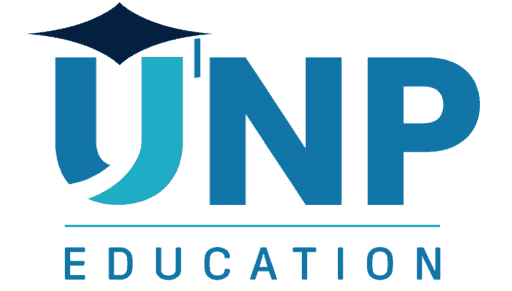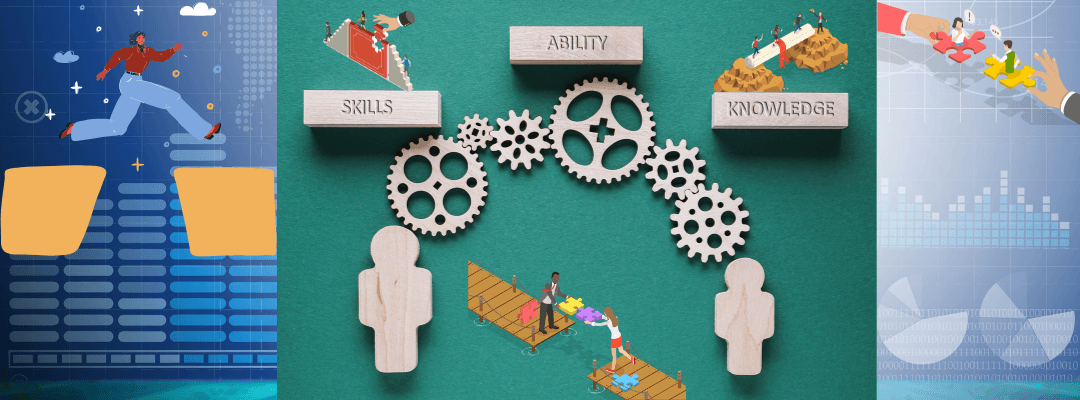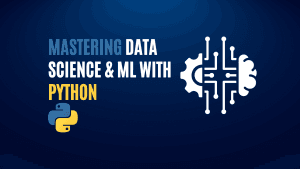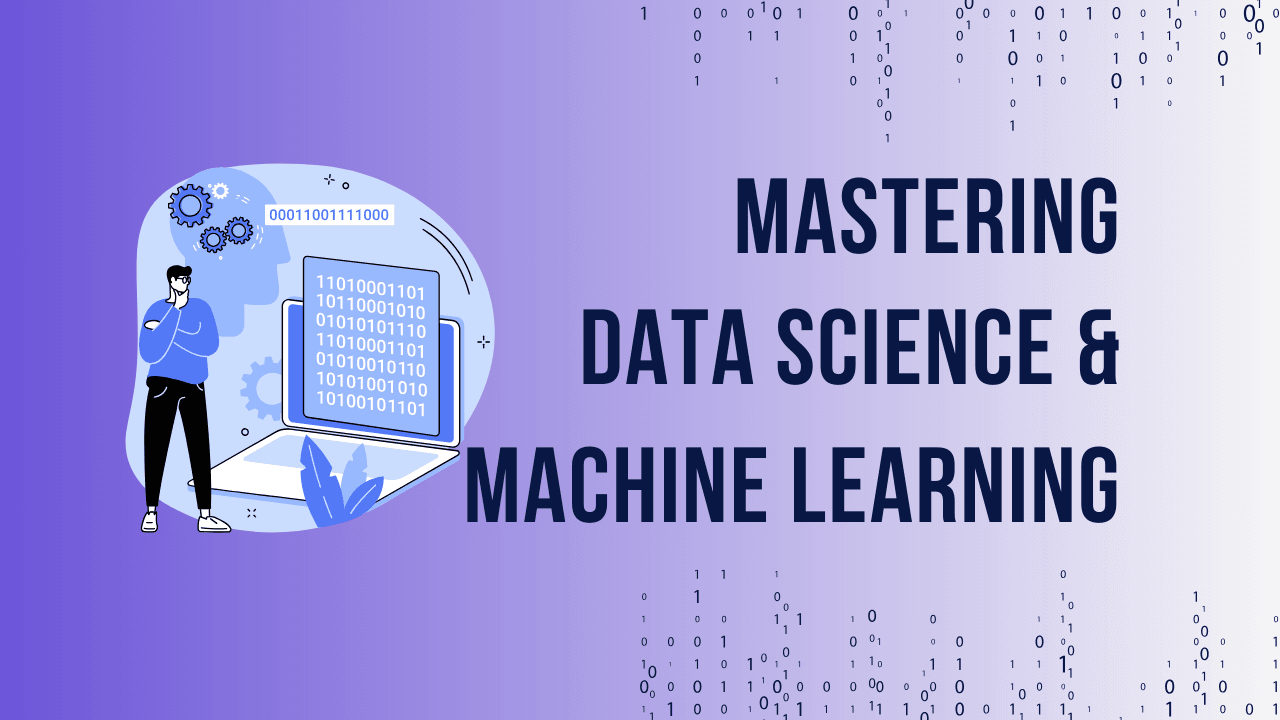In today’s rapidly evolving world, the skills required by industries are changing faster than ever. The rise of automation, artificial intelligence (AI), and data-driven decision-making has led to an urgent demand for highly skilled workers. In India, this demand has outpaced the current educational system’s ability to supply job-ready graduates. Using Data Science to bridge the skills gap has emerged as a solution, offering students the tools they need to thrive in a modern workforce.
Ready to take you Data Science and Machine Learning skills to the next level? Check out our comprehensive Mastering Data Science and ML with Python course.
Introduction to the Skills Gap in India
India, like many countries, faces a significant skills gap across various sectors. This gap represents the disparity between the skills employers need and the skills job seekers possess. As industries evolve due to technological advancements, this gap is widening, leaving many students underprepared for modern jobs.
Defining the Skills Gap
The skills gap is the difference between the knowledge, skills, and abilities employers seek in their workforce and what is available in the labor market. With the rise of digital technologies, companies require employees proficient in data analysis, machine learning, and coding. Unfortunately, traditional education systems often fail to equip students with these necessary competencies.
Ready to take you Data Science and Machine Learning skills to the next level? Check out our comprehensive Mastering Data Science and ML with Python course.
Causes Behind the Growing Skills Gap in the Workforce
The skills gap stems from several factors, including outdated educational curricula, lack of industry-relevant training, and insufficient focus on emerging technologies. As industries shift towards data-driven decision-making, workers lacking data literacy and analytical skills find themselves at a disadvantage.
The Role of Data Science in Modern Education
Data science has quickly become a cornerstone of education and workforce development. As businesses increasingly rely on data to drive growth, students must acquire data literacy to remain competitive in the job market.
Data Science as a Critical Tool in Skill Development
Data science enables students to develop critical thinking, problem-solving, and analytical skills, which are essential in today’s workplace. By integrating data science into education, students gain hands-on experience in data analysis, data visualization, and machine learning, giving them a leg up in industries like technology, finance, and healthcare.
Why Data Science is Vital for Bridging the Gap
As industries grow more data-centric, proficiency in data science can significantly bridge the skills gap. Indian students trained in data science will be better equipped to meet the demands of modern employers, reducing unemployment and underemployment in tech and non-tech sectors alike.
Preparing Indian Students for a Data-Driven Future
India’s education system is gradually evolving to address the skills gap, but more needs to be done. Introducing data science into the curriculum is one of the key ways to ensure Indian students are prepared for future opportunities.
Current Education Landscape in India
Many Indian educational institutions still focus on traditional teaching methods, which do not fully prepare students for the realities of the job market. Schools and universities must revise their curricula to include practical, hands-on learning in data science.
Enhancing Curriculum with Data Science Skills
To prepare students for a data-driven world, Indian schools should introduce data science modules at an earlier stage. This can include coding, statistical analysis, and the fundamentals of machine learning, ensuring students are ready for the demands of a modern economy.
Skills Gap Across Industries in India
The skills gap is most evident in fast-growing sectors, such as technology, but it is also affecting industries traditionally seen as non-tech.
Ready to take you Data Science and Machine Learning skills to the next level? Check out our comprehensive Mastering Data Science and ML with Python course.
Benefits of Teaching Data Science to Indian Students
Data science education opens up new career opportunities for students, providing them with highly sought-after skills in a competitive job market.
Industry Collaboration and Data Science Education
Collaboration between industries and educational institutions is crucial to closing the skills gap. By working together, they can ensure that the skills taught in classrooms align with industry needs.
Partnerships Between Educational Institutions and Corporates
To effectively train students, universities and companies should form partnerships. These collaborations can involve guest lectures, internships, and real-world projects, allowing students to gain practical experience in data science.
Government Initiatives to Bridge the Skills Gap
The Indian government has introduced several initiatives to address the skills gap, focusing on promoting education in emerging fields like data science.
Ready to take you Data Science and Machine Learning skills to the next level? Check out our comprehensive Mastering Data Science and ML with Python course.
Challenges in Implementing Data Science Education
While the benefits of teaching data science are clear, there are several challenges that must be addressed to ensure its widespread adoption.
Case Studies of Successful Data Science Programs in India
Several Indian institutions have already implemented data science programs with great success. These programs provide a model for other schools and universities to follow.
Private Sector Initiatives in Data Science Education
Companies like Infosys and TCS have launched their own data science training programs, partnering with universities to provide students with the skills they need to succeed
Table of Contents
ToggleFAQs
1. What is the skills gap, and how is it affecting the future workforce in India?
The skills gap refers to the mismatch between the skills employers need and the skills that workers currently possess. In India, this gap is widening as technological advancements, such as AI and automation, reshape industries. Many students are graduating without the necessary technical or soft skills, making it harder for them to find jobs in a rapidly changing market.
2. How can data science help bridge the skills gap for Indian students?
Data science can analyze education and labor market trends, helping educational institutions adapt their curricula to better align with employer needs. It can also identify specific skills in demand and predict future workforce trends, enabling students to focus on acquiring the right skills. Additionally, data science helps create personalized learning pathways and enhances decision-making for students.
3. What specific skills are most important for Indian students to acquire in the data-driven future workforce?
Some of the key skills include programming languages (such as Python and R), data analysis, machine learning, and artificial intelligence. Additionally, problem-solving, critical thinking, and communication skills are becoming increasingly important, as they allow students to navigate and thrive in data-driven environments.
4. How can Indian educational institutions implement data science to improve skill development?
Indian educational institutions can integrate data science into their curriculums by offering specialized courses in data analytics, machine learning, and AI. They can also collaborate with industry partners to offer hands-on projects, internships, and real-world case studies. Leveraging data to personalize learning experiences for students and track their progress can also ensure better skill development.
5. What role do companies play in bridging the skills gap with data science?
Companies can work closely with educational institutions to outline the specific skills they require from graduates. By sharing data on workforce needs, companies can help shape training programs and curricula. Many companies are also investing in their own data science training programs to upskill employees and prepare future talent pools.
6. How can students benefit from understanding data science even if they aren’t pursuing a career in this field?
Even if students don’t plan to become data scientists, understanding the basics of data science can be invaluable. In today’s data-driven world, data literacy helps students make better decisions, understand market trends, and gain insights from data that are useful in any career. It can also improve problem-solving and analytical thinking, which are beneficial in a wide range of fields.
Our Students Testimonials:
Ready to take you Data Science and Machine Learning skills to the next level? Check out our comprehensive Mastering Data Science and ML with Python course.



